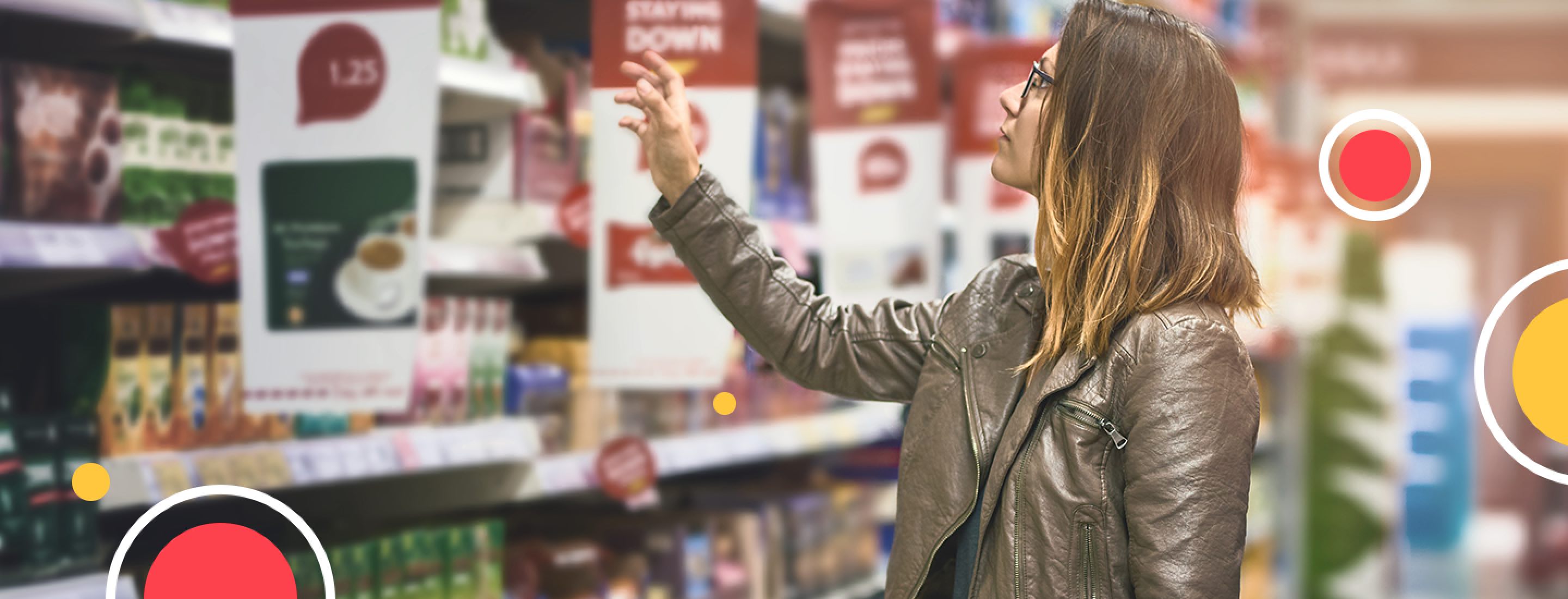What issue can we solve for you?
Type in your prompt above or try one of these suggestions
Suggested Prompt



Insights
How Consumer Products Companies Can Survive and Thrive During an Inflationary Economic Cycle
How Consumer Products Companies Can Survive and Thrive During an Inflationary Economic Cycle
While the current high inflation environment requires immediate action, consumer products companies should also prepare for long-term localized inflation impact from environmental shocks
The consumer products (CP) world is facing the potential return of a recessionary environment, and brands are quickly figuring out how to adapt to changing consumer habits. From beauty to FMCG, from luxury to durable consumer goods, every sector is dealing with different levels of inflation and potential buyer backlash.
Unfortunately, business growth in an inflationary environment will challenge the industry not only in 2023, but potentially for years to come. This current inflationary pressure and future long term volatility increases the urgency to embrace a new set of opportunities within Digital Business Transformation. CP companies have a unique window to reinvent and reinvigorate their business models to become more efficient and adaptable to economic fluctuations.
"It is finally time for the CP industry to engage in true Digital Business Transformation; this environment creates the opportunity for them to adopt a digital-based strategy to thrive."
Sabrina McPherson , Senior Managing Director, Management Consulting
The three digital principles that can steer consumer products firms during a recessionary economic cycle and future crises are agility, data analytics and consumer engagement. To understand how these principles translate into strategic action, it's important to first discuss how global economic conditions are impacting the consumer products industry in the now and the next.
How has inflation affected the consumer products industry thus far?
Inflation in the CP industry rose at a drastic rate in 2022, although its scale across sectors was extremely unpredictable. AB InBev’s Chief Executive Officer stated in May 2022 that “inflation continues to move very fast and is moving above or faster than what the expectation was,” which echoes sentiments across the industry.
The charts below reveal the major differences in how commodity price inflation rates affect various sectors.
World Bank Commodity price data, index (100 = 2010 average) (as of May 2022)
More price-sensitive sectors experienced a higher increase in raw material costs. For example, food and beverage prices, particularly produce, have inflated dramatically, and consumer demand has weakened. According to the U.S. Bureau of Labor Statistics (BLS), fruit and vegetable prices grew by 1.6%, even higher for popular produce like lettuce (6.8%) and apples (5%).

In response to this inflation, consumers switched to private-label brands with lower price tags and have cut overall spend. Clothing, non-essential foods and staple foods witnessed more than a 30% reduction in spending compared to toiletries, cosmetics and alcohol sectors.

On the other hand, price hikes for beauty products combined with the overall negative economic outlook haven’t yet deterred customers from regular purchasing habits. The indicator known as the “Lipstick Effect” has rung true for many cosmetics companies that reported increasing growth this year.
How will inflation affect the consumer products industry in 2023?
Experts agree that raw material volatility and pricing will continue to increase while consumer demand decreases across product categories. The UN anticipates a larger global recession for developing countries in 2023. Jamie Dimon, CEO of J.P. Morgan, recently predicted significant headwinds. However, monetary policy may reduce impact by the end of 2023.
The impact of inflation will vary by geography
The IMF predicts the UK will experience the most significant and persistent high inflation across the G7, with Germany, Italy and France close behind.

In Europe, private label sales already account for a larger chunk of grocery purchases than in North America, according to the Private Label Manufacturers Association.
“In the short term, CP firms can anticipate a faster adoption to private label in the U.S. and other regions and should prepare to increase their private label business (if they have one) over their owned brands,” says Picard.
Well-known tactics like shifting to private label, promotions and pricing optimization can provide a band-aid solution for firms in 2023, but more long-term strategies are necessary for the following years.
How will inflation affect consumer products companies in the long-term?
Inevitable weather events, such as heat waves, flooding and droughts will drive long-term inflation through disruptions to supply chains and production. A 2018 National Climate Assessment anticipated that global warming will decrease worker productivity by $221B a year by 2090, and climate-related weather events will cost the U.S. $500 billion per year.
“CP companies cannot rely on increasing prices and reducing costs continually for the next 5, 10 or 20 years. The world is changing and they need to fundamentally rethink their business model,” says Picard.
Ultimately, environmental issues will be a top source of long-term inflation for global CP companies, but the effects will be more localized and volatile. While most businesses are familiar with the potential effects of environmental issues in the now, these effects will be amplified in the future.
- Decreased supply:
Experts are predicting severe disruption to supply chains from flooding, power outages and wind damage that could stall factory and farm production.
- Reduced agricultural productivity:
Projected increases in temperatures, changes in precipitation patterns, changes in extreme weather events, and reductions in water availability may all result in reduced agricultural productivity.
- Hindered transportation:
The food transportation system in the U.S. frequently moves large volumes of grain by water. In the case of an extreme weather event affecting a waterway, there are few, if any, alternate pathways for transport.
“While the CP industry has enjoyed relative stability, it’s time to get ready for what we can call the ‘localized shock economy.’ CP companies can look toward tech companies and startups as an example of how to adopt to volatility in an unstable industry.”
Stephen Picard , Associate Managing Director, Consumer Products, Luxury & Retail
Three key digital strategies to combat long-term inflation within the consumer products industry
While CP companies expect monetary policy to reduce inflation in 2023, environmental policy is not guaranteed, and the scale or impact of such policies isn’t black-and-white. To thrive in a ‘localized shock economy,’ CPs need to become more agile, data-driven and connected to consumers.
Climate change conversations often ask “how can CP companies reduce environmental impact?” or “how can CP companies help consumers reduce environmental impact?” But another urgent aspect of sustainability is ensuring that CP companies can sustain environmental impact themselves.
CP companies that digitally transform now will be prepared for a new era of sustainable business in the future.
“Companies should be thinking through a longer-term solution around resilience, agility and consumer engagement strategy. ‘Do I have the right resources, the right data and the right technology to be able to do this at pace and with rapid iteration? Am I understanding and influencing consumer demand enough to reduce waste in my business?’”
Stephen Picard , Associate Managing Director, Consumer Products, Luxury & Retail
1/ Adopt a digital operating model to allow for agility
To adapt to volatility, CP firms should transition to an agile organization model. This involves setting up agile response teams that are cross-functional and empowered to make decisions based on what they’re seeing in the marketplace in the moment. Today, CPs make pricing decisions every three months, rather than the historical practice of two times a year, and these decisions will become even more rapid as volatility increases. CPs can learn from the tech world to infuse best practices into their organizations.
Read Publicis Sapient’s Guide to Digital-First Operating Models for 2023
2/ Unlock the value of data-driven decision-making
Revenue growth management (RGM), including actions around pricing, assortment, promotions and trade investment, require advanced data analytics capabilities and data-driven strategy. CP firms should utilize agile operating models for RGM, powered by new intelligent decision-making processes.
Real-time inventory and analytical assortment optimization will prevent increasing costs and maintain service levels during inflation and shocks. Decision-makers need end-to-end visibility of the entire supply chain, from suppliers to stores. For example, a potential recession may require more value products in certain stores and premium products in others based on consumer demands. CPs will need to make fast adjustments, which also involves transforming traditional decision-making strategies to focus on data.
Read Publicis Sapient’s Guide to Predictive Analytics for 2023
3/ Implement always-on consumer engagement
Newly available consumer data is also prompting CP companies to re-evaluate consumer engagement strategies, personalized offerings, media channels and loyalty programs. Developing an activation strategy centered around personalization delivers higher engagement with more captive audiences, but it requires re-creating the consumer journey to achieve maximum ROI.
“Winning in this new world requires that CP companies fundamentally change the way they engage with their consumers. They need to move to an ‘Always-On’ engagement model that leverages data to provide relevant messages across multiple touchpoints at the right moment. It’s not about one purchase, but building direct relationships with consumers,” says McPherson.
Always-on engagement moves away from traditional campaign-based marketing to relevant, real-time communication that is tailored to specific moments in the customer journey or decision-making process. This strategy, implemented through a CDP, allows CPs to build an edge and reduce waste in their business by delivering personalized experiences that fit seamlessly within a complex and evolving shopper journey.
Read Publicis Sapient’s Always-On Engagement: Customer Relationships Built on Value
"The days of multi-month planning cycles across marketing, innovation and more are gone. To thrive, CP companies need to move to a more digitally native strategy that enables them to test and learn, anticipate and respond to fast-changing consumer and retailer needs, and deliver both consumer and business value at speed."
Sabrina McPherson , Senior Managing Director, Management Consulting















